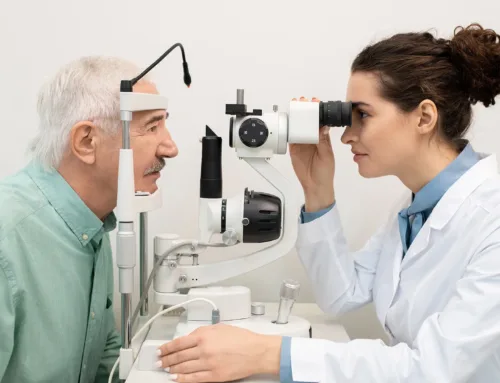LASIK isn’t the best choice for everyone. It’s a choice — one of many choices — and for some people, it is only one of the many options available for vision correction. The only time LASIK is the best choice is when (1) you’re a good candidate for the procedure, and (2) you don’t want to wear glasses or contacts anymore. If either of those isn’t true, then it is better to look at other options that don’t include LASIK.
What If You Still Want To Wear Glasses?
To tackle the second scenario first, some people don’t mind very much if they need to wear glasses or contacts. In those cases, the best option for vision correction is glasses or contacts. Even though I spend all my time trying to help people get out of glasses, I understand some people just don’t mind them. Some people even prefer them. I once had an elderly fellow tell me he wanted to make sure that he still needed glasses after his cataract surgery because his grandkids wouldn’t recognize him otherwise. I asked if he’d like to have good eyesight without glasses and then just have a pair of “fashion” glasses with no prescription for when he’s with his grandkids. Then he looked at me like I asked him if he’d be interested in eyelash extensions. I felt like I should go home and build a shed just to earn enough of his respect back to be able to ask forgiveness for saying the word “fashion” to him.
What If You’re Not A LASIK Candidate?
Besides glasses and contacts, there are other options for vision correction that revolve around making your eyes work without the need for outside help from lenses. These other options are better for people who can’t have LASIK because they’re not candidates. And by the way, it’s possible to be a candidate from a technological standpoint, but not from a personal standpoint. Some people know a friend who had really amazing results from another procedure, and so they really want that procedure. If the visual results are the same, it means that the other procedure is the one they’re the best candidate for. Mindset matters a whole lot when you’re going into this process.
What Are Your Other Options?
Those other procedures — the other options — include PRK, ICL, CLR, and refractive cataract surgery. PRK is short for photorefractive keratectomy and in modern times is often called Advanced Surface Ablation instead. It is basically LASIK but without the laser-created layer being used to hide the laser treatment. When the treatment happens on the surface of the eye, the results are the same as LASIK, but it takes longer to recover. ICL is short for Implantable Collamer Lens, and it is a tiny lens (much smaller than a contact) placed in the front of the eye in a 10-minute procedure with a same-day recovery. It is better than LASIK for people who are very myopic (nearsighted). CLR is Custom Lens Replacement and is like ICL except that the natural lens in the eye is removed before a new one is placed. It takes 15 minutes and is better for people who are over the age of 50 because it will yield better vision for near and distance, and be permanent. The permanence feature is hard to pass up when it is available. Custom Lens Replacement is CLR, but when the natural lens has become cloudy enough to be called a cataract. It’s also for correction of both near and distant vision and is also permanent.
You may want to find out not just what the other options are, but if those other options apply to you. If you like wearing glasses, or are that old man that made me feel like a sissy, then you’ve already obtained your best option with a pair of glasses. If you’d like a way out of glasses and contacts, a consultation is the best way to figure out if there are other options besides LASIK for you in particular. You may even find out that LASIK is an option after all, even if it wasn’t at one point.




